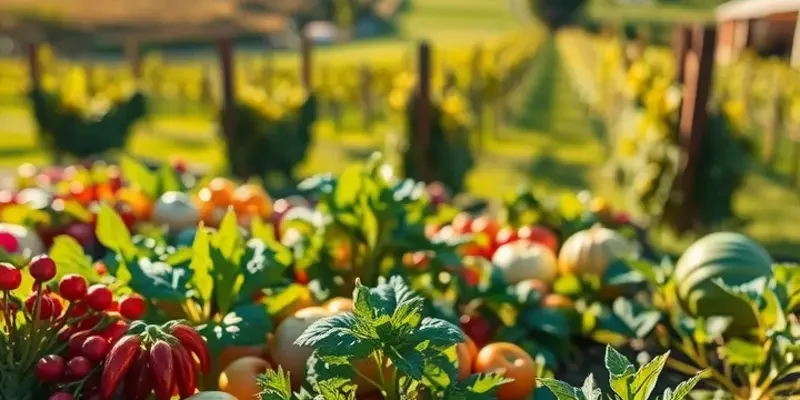Measuring ingredients accurately is the cornerstone of successful cooking and baking. Whether you are whipping up a quick weeknight dinner or baking a delicate soufflé, precision in measuring can significantly impact the outcome of your dish. This guide offers clear and practical tips for home cooks of all levels, ensuring that everyone can improve their kitchen measuring skills with ease and confidence.
The Essentials of Accurate Measuring

Achieving precision in cooking begins with understanding and utilizing the correct measuring tools. As a home cook, knowing which tools to rely on can transform your culinary outcomes from inconsistent to consistently delicious. Start by familiarizing yourself with the basics: measuring cups, spoons, and scales.
Measuring Cups
Measuring cups come in two main types: dry and liquid. Dry measuring cups are designed to hold the exact amount needed without spilling, useful for ingredients like flour and sugar. The key is to fill the cup and level it off with a straight edge. For liquid ingredients, use liquid measuring cups, typically with a spout. These should be filled to the precise level indicated by measurement marks, ensuring accuracy by viewing them at eye level. Avoid leaning over the cup, which can lead to inaccurate readings.
Measuring Spoons
Measuring spoons are crucial for smaller quantities, typically ranging from 1/8 teaspoon to 1 tablespoon. Keep them nested for easy access, and use them for both dry and liquid ingredients. When measuring dry ingredients, dip the spoon into the ingredient and level it with a straight edge. For liquids, fill the spoon without spilling to achieve accuracy.
Kitchen Scales
For certain recipes, especially baking, a kitchen scale provides the most precise measurements. Digital scales are favored for their ease of use and ability to measure in various units. Always place the scale on a flat surface, use the tare function to zero out the weight of any container, and add your ingredients to the desired weight. This method reduces inconsistencies and is crucial for recipes where proportions matter significantly.
Expert Techniques
An often overlooked aspect of measuring is proper ingredient handling. For example, when measuring flour, avoid scooping directly from the container, as this compacts the flour and results in excess weight. Instead, aerate the flour with a fork, spoon it into your measuring cup, and level it off. Similarly, brown sugar should be packed tightly until the cup holds its shape when flipped. Such techniques are small but essential details that significantly impact the final dish.
Understanding and employing these tools and techniques can greatly enhance the quality of your dishes. For those looking to further minimize waste in the kitchen, exploring effective food storage methods can help maintain ingredient freshness for precise measuring and cooking.
Adopting these precise measuring practices will ensure each dish is made with consistency, aligning flavor and texture with your culinary vision. As you continue with this guide, you’ll be better equipped to tackle any recipe with confidence and precision.
Common Measuring Mistakes to Avoid

Measuring ingredients accurately is crucial to the success of any dish. Yet, even the most seasoned cooks can make common errors that can result in disappointing outcomes. One of the most frequent mistakes is using the wrong tool for the job. For instance, liquid measuring cups should be reserved strictly for liquids. Conversely, dry ingredients require the use of dry measuring cups to ensure the measurement is precise. Mixing these up can lead to significant discrepancies in your measurements.
Another culprit in inaccurate measurements is failing to level off dry ingredients. When measuring flour, for example, it’s essential to use a straight edge, such as a knife, to level off the top of the measure. This simple step can mean the difference between a tender pastry and a dry one. Similarly, with sticky ingredients like brown sugar, packing the ingredient firmly ensures you’re using the right amount, preventing your cookies from spreading too thin.
Relying on estimation is another pitfall. While it can be tempting to eyeball a teaspoon of salt or a tablespoon of oil, this habit often results in inconsistent flavors. Utilization of true measuring spoons ensures your dish turns out as intended. Marked measuring spoons leave little room for error, allowing cooks to experiment confidently.
Ambient conditions can also play a surprising role. Flour packed tight on a humid summer day can throw off your measurements, often necessitating adjustments. Being mindful of these conditions helps home cooks adapt recipes without compromising the results. Additionally, storing ingredients such as flour in a dry place can mitigate measurement issues caused by moisture absorption.
For more insights and further tips on storage and suitable tools, consider visiting resources like this eco-friendly pantry staples guide, which offers practical advice on maintaining ingredient quality while being environmentally friendly.
Lastly, misunderstanding the weight of ingredients can lead to overcompensation. It’s crucial to recognize that not all ingredients weigh the same. A cup of chopped nuts weighs differently from a cup of flour. Weighing your ingredients using a kitchen scale can provide the most accurate measurements, especially when baking where precision is key.
Even if you’re an experienced cook, it’s worthwhile to revisit these fundamental practices regularly. By honing your measuring skills and avoiding common pitfalls, you’ll set the stage for culinary success, dish after dish.
Final words
Mastering the art of measuring in the kitchen is an essential skill that can elevate your cooking and baking endeavors. From choosing the right tools to avoiding common pitfalls, the insights provided in this guide will help you gain confidence in your measuring abilities. By practicing these tips, you’ll not only improve your culinary results but will also develop a deeper understanding of how ingredient ratios affect your dishes. Keep these instructions handy as you continue to explore the beautiful world of cooking, and watch as your skills flourish.







